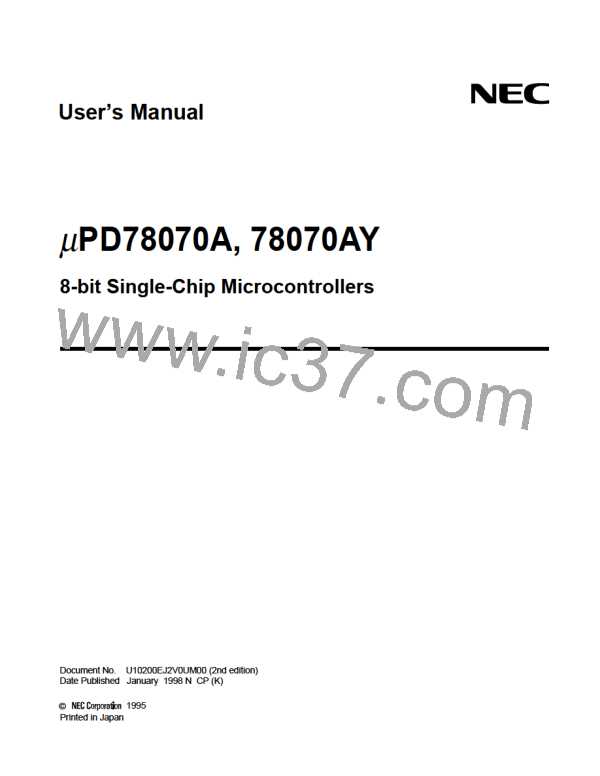CHAPTER 3 PIN FUNCTION (µPD78070A)
3.2.6 P70 to P72 (Port 7)
These are 3-bit input/output ports. Besides serving as input/output ports, they function as serial interface data
input/output and clock input/output.
The following operating modes can be specified bit-wise.
(1) Port mode
These ports function as 3-bit input/output ports. They can be specified bit-wise as input ports or output ports
with port mode register 7 (PM7). When they are used as input ports, on-chip pull-up resistors can be
connected by defining the pull-up resistor option register L (PUOL).
(2) Control mode
These ports function as serial interface data input/output and clock input/output.
(a) SI2, SO2
Serial interface serial data input/output pins.
(b) SCK2
Serial interface serial clock input/output pin.
(c) RxD, TxD
Asynchronous serial interface serial data input/output pins.
(d) ASCK
Asynchronous serial interface serial clock input/output pin.
Caution When this port is used as a serial interface, the I/O and output latches must be set according
to the function the user requires.
For the setting, refer to the operation mode setting list in Table 20-2. Serial Interface
Channel 2.
3.2.7 P90 to P96 (Port 9)
These are 7-bit input/output ports.
They can be specified bit-wise as input or output ports with port mode register 9 (PM9).
P90 to P93 are N-ch open-drain pins. When P94 to P96 are used as input ports, on-chip pull-up resistors can
be connected by defining the pull-up resistor option register H (PUOH).
62

 ETC [ ETC ]
ETC [ ETC ]